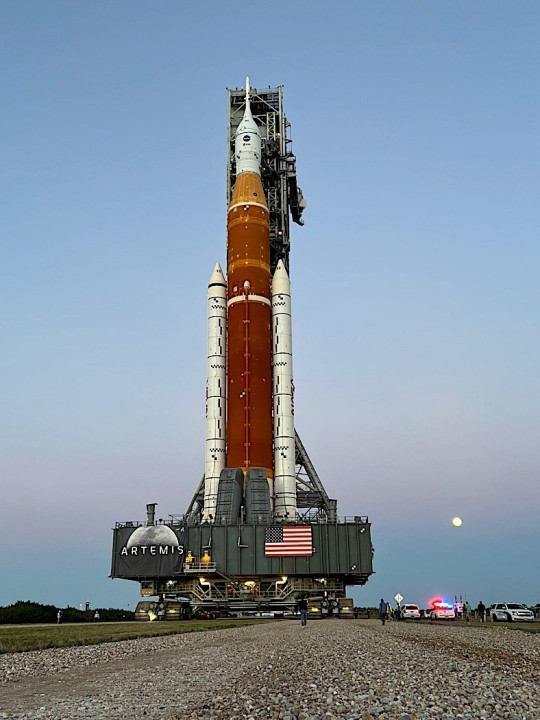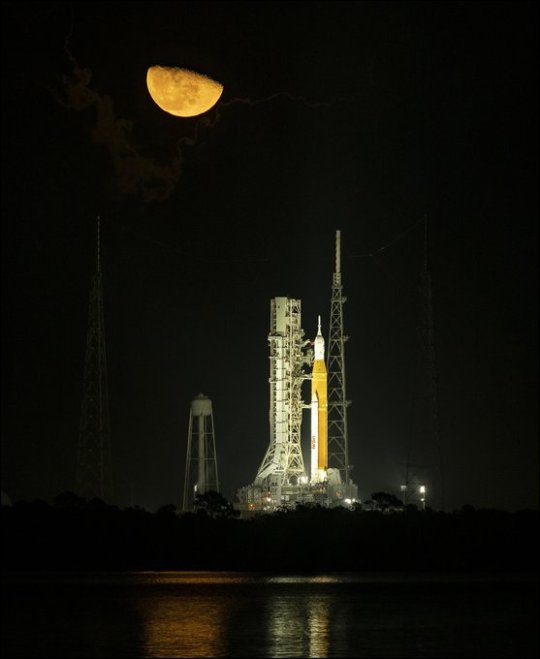#artemis moon rocket
Text
Shaun the Sheep
"Although it might be a small step for a human, it's a giant leap for lambkind," said European Space Agency's David Parker of Shaun the sheep's space trip. Shaun is flying in the Artemis 1 Official Flight Kit (OFK) 🛰️🚀


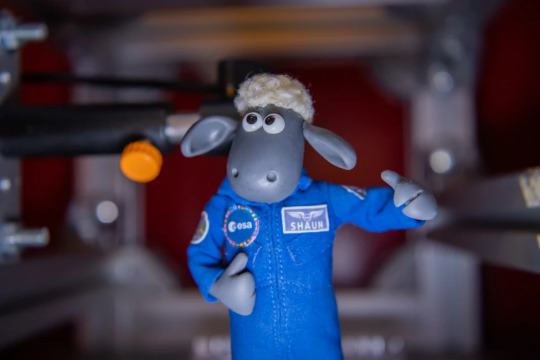
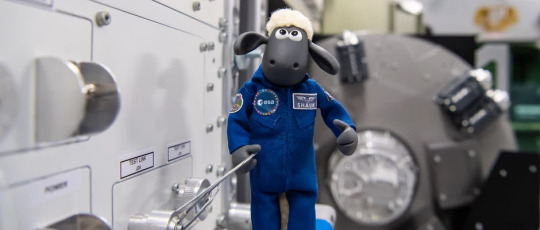
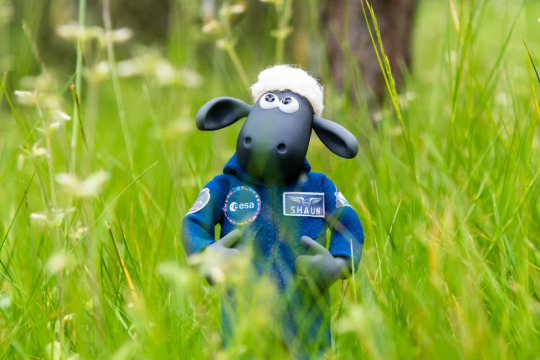
Photo credit: European Space Agency via Space.com /BBC Radio 4 Today/Aardman via Science Focus 🛰️🚀
#shaun the sheep#artemis 1#artemis moon rocket#official flight kit#space travel#european space agency#artemis rocket#lambkind#shaun the sheep doll#nasa#nasa moon mission#friday fun#aardman#animation#december#apollo 17#50th anniversary#space
40 notes
·
View notes
Text
A live broadcast of the launch also will include celebrity appearances by Jack Black, Chris Evans, and Keke Palmer, as well as a special performance of “The Star-Spangled Banner” by Josh Groban and Herbie Hancock. It also will feature a performance of “America the Beautiful” by The Philadelphia Orchestra and cellist Yo-Yo Ma, conducted by Yannick Nézet-Séguin. 🚀
22 notes
·
View notes
Text
NASA goes ahead with 'Plan A' to launch moon rocket while it watches the weather
NASA goes ahead with ‘Plan A’ to launch moon rocket while it watches the weather
After a successful test of a cryogenic fuel-filling system for its heavy-lift Space Launch System rocket, NASA said weather forecasts will determine whether it makes a third attempt to launch its Artemis 1 round-the-moon mission next week.
Credit social media
It’s not just any weather: it’s a tropical depression in the Caribbean Sea that could turn into a hurricane hitting the Florida…

View On WordPress
#artemis moon rocket#associated press#brevard county#Business#general news#kennedy space center#space news#us fl nasa artemis weather (cr)#weather
2 notes
·
View notes
Text

Moonbound: One Year Since Artemis I
On this day last year, the Artemis I rocket and spacecraft lit up the sky and embarked on the revolutionary mission to the Moon and back. The first integrated flight test of the rocket and spacecraft continued for 25.5 days, validating NASA’s deep exploration systems and setting the stage for humanity’s return to the lunar surface.

On Nov. 16, 2022, the Space Launch System (SLS) rocket met or exceeded all expectations during its debut launch on Artemis I. The twin solid rocket booster motors responsible for producing more than 7 million pounds of thrust at liftoff reached their performance target, helping SLS and the Orion spacecraft reach a speed of about 4,000 mph in just over two minutes before the boosters separated.

Quite a few payloads caught a ride aboard the Orion spacecraft on the Artemis I mission: In addition to a number of small scientific satellites called CubeSats, a manikin named Commander Moonikin Campos sat in the commander’s seat. A Snoopy doll served as a zero-gravity indicator — something that floats inside the spacecraft to demonstrate microgravity.
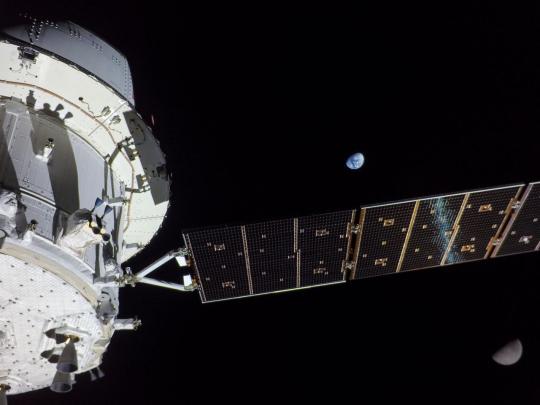
During the mission, Orion performed two lunar flybys, coming within 80 miles of the lunar surface. At its farthest distance during the mission, Orion traveled nearly 270,000 miles from our home planet, more than 1,000 times farther than where the International Space Station orbits Earth. This surpassed the record for distance traveled by a spacecraft designed to carry humans, previously set during Apollo 13.
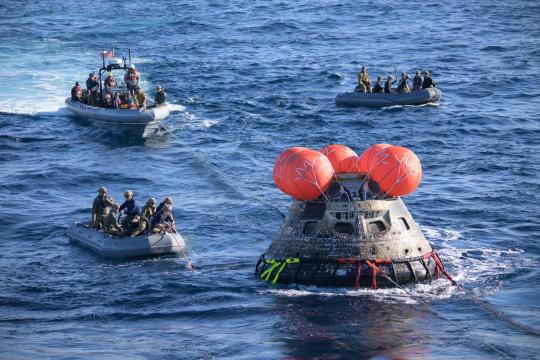
The Orion spacecraft arrived back home to planet Earth on Dec. 11, 2022. During re-entry, Orion endured temperatures about half as hot as the surface of the Sun at about 5,000 degrees Fahrenheit. Within about 20 minutes, Orion slowed from nearly 25,000 mph to about 20 mph for its parachute-assisted splashdown.
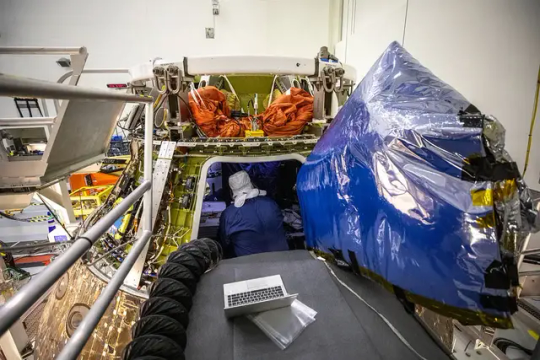
Recovery teams successfully retrieved the spacecraft and delivered it back to NASA’s Kennedy Space Center for de-servicing operations, which included removing the payloads (like Snoopy and Commander Moonikin Campos) and analyzing the heat shield.
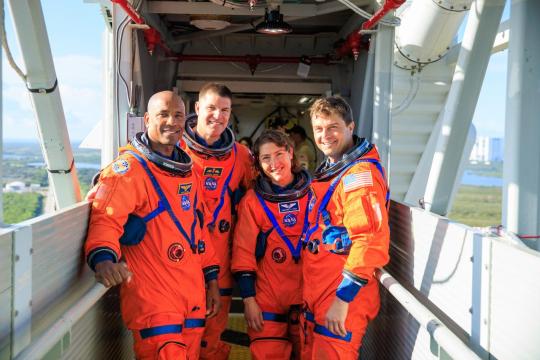
With the Artemis I mission under our belt, we look ahead to Artemis II — our first crewed mission to the Moon in over 50 years. Four astronauts will fly around the Moon inside Orion, practicing piloting the spacecraft and validating the spacecraft’s life support systems. The Artemis II crew includes: NASA astronauts Reid Wiseman, Victor Glover, and Christina Koch, and CSA astronaut Jeremy Hansen.
youtube
As we look ahead to Artemis II, we build upon the incredible success of the Artemis I mission and recognize the hard work and achievements of the entire Artemis team. Go Artemis!
Make sure to follow us on Tumblr for your regular dose of space!
#Artemis#Rocket#Anniversary#Launch#NASA#Space#Moon#Lunar#Astronaut#Apollo#Orion#Spacecraft#Space Launch System#STEM#science#tech#technology#on this day#Youtube
2K notes
·
View notes
Text
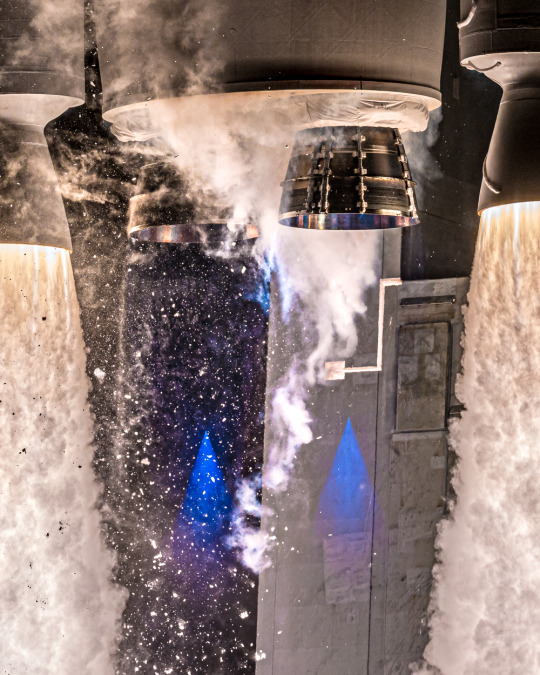

Liftoff of ULA Vulcan l John Kraus
l First U.S. commercial robotic launch to the Moon l ULA(United Launch Alliance) l more info at NASA
#rocket launch#vulcan#ULA#astrophotography#nasa#artemis mission#moon#science#stars#solar system#astronomy#galaxy#planet#cosmos#universe#sky
634 notes
·
View notes
Text
Artemis I liftoff
#sls#nasa#rocket#launch#space launch system#moon#Artemis 1#Artemis I#aerospace#engineering#srb#finally
978 notes
·
View notes
Text

Happy Holidays! Everyone has their own holiday traditions, but there’s one thing we can all celebrate today… The anniversary of the first time humanity visited the Moon! Apollo 8 entered lunar orbit and snapped the iconic Earthrise image on OTD in 1968.
Now, 54 years later, we are preparing to return utilizing spacecraft that are more powerful and advanced than ever before. This time the Moon isn’t a destination, but a foothold as we look onward to Mars. We are going.
#nasa#artemis#apollo#happy holidays#space#spaceflight#space exploration#earthrise#apollo 8#moon#earth#astrophotography#outer space#science#aerospace#rocket science#technology#engineering#stem#steam#otd#my new year’s resolution is to learn how to use tags
400 notes
·
View notes
Text
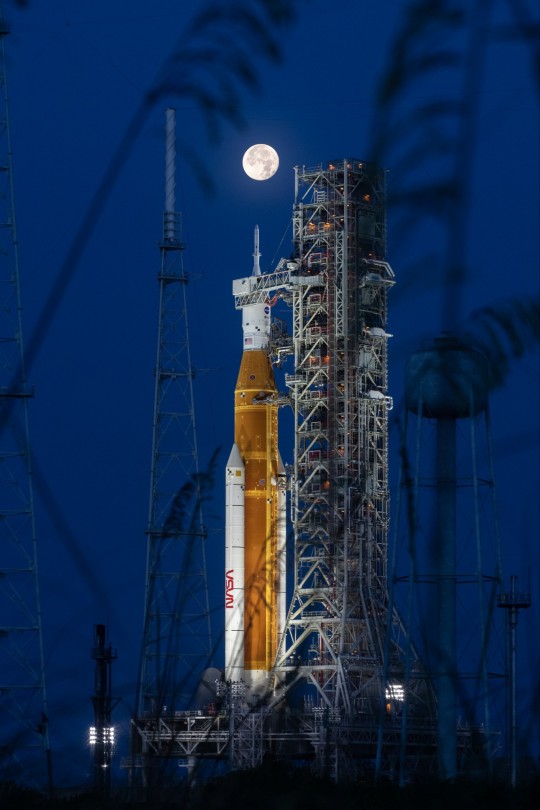
Artemis I SLS with Full Moon
"A full Moon is in view from Launch Complex 39B at NASA’s Kennedy Space Center in Florida on June 14, 2022. The Artemis I Space Launch System (SLS) and Orion spacecraft, atop the mobile launcher, are being prepared for a wet dress rehearsal to practice timelines and procedures for launch. The first in an increasingly complex series of missions, Artemis I will test SLS and Orion as an integrated system prior to crewed flights to the Moon. Through Artemis, NASA will land the first woman and first person of color on the lunar surface, paving the way for a long-term lunar presence and using the Moon as a steppingstone on the way to Mars."
Date: June 14, 2022
NASA ID: KSC-20220614-PH-CSH01_0068
83 notes
·
View notes
Text

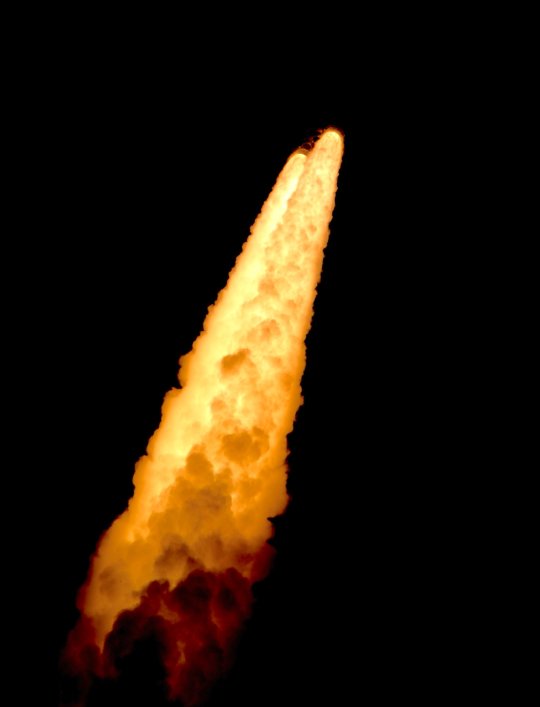
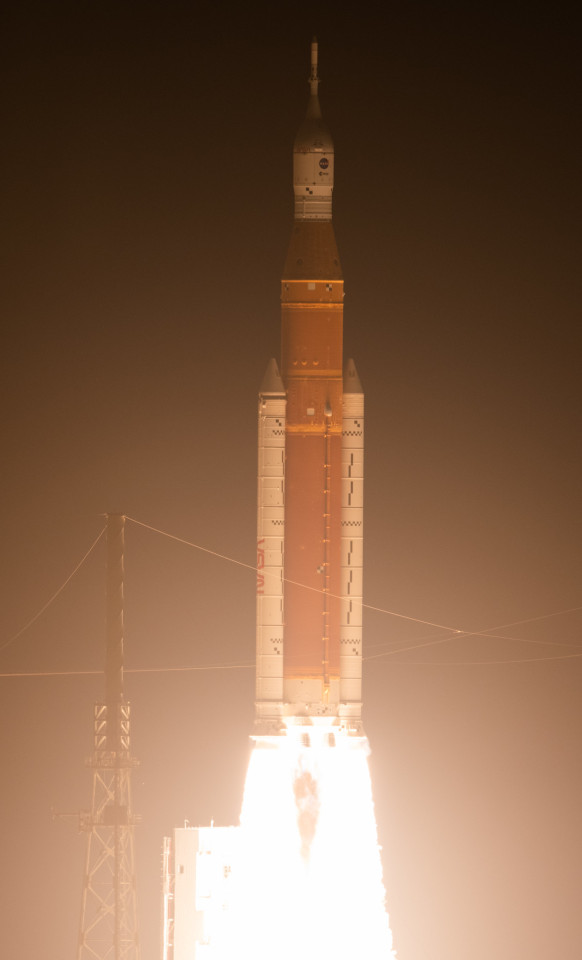
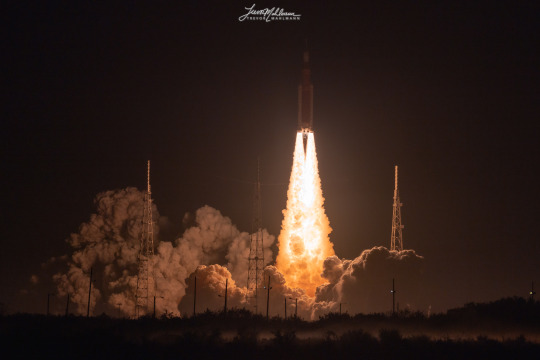
Credit: ESA photographer Stephane Corvaja, NASA HQ Photo and Trevor Mahlmann
#nasa#space#photography#artemis#artemis 1#artemis I#orion#orion spacecraft#moon#moon mission#science#launch#rocket#my post
220 notes
·
View notes
Text
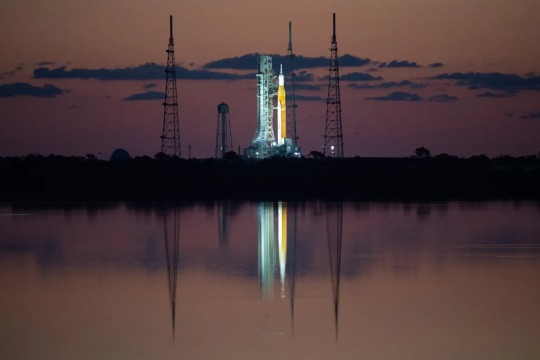
Artemis 1 is launching tomorrow morning 8:33 am EDT (12:33 UTC). Want a quick lowdown on the mission and how and where to launch (also details if you want to see in person or go to a watch party)? Check out my blog post.
257 notes
·
View notes
Text


TOKYO, Sept 7 (Reuters) - Japan launched its lunar exploration spacecraft on Thursday aboard a homegrown H-IIA rocket, hoping to become the world's fifth country to land on the moon early next year.
Japan Aerospace Exploration Agency (JAXA) said the rocket took off from Tanegashima Space Center in southern Japan as planned and successfully released the Smart Lander for Investigating Moon (SLIM).
Unfavourable weather led to three postponements in a week last month.
Dubbed the "moon sniper," Japan aims to land SLIM within 100 metres of its target site on the lunar surface.
The $100-million mission is expected to start the landing by February after a long, fuel-efficient approach trajectory.
"The big objective of SLIM is to prove the high-accuracy landing ... to achieve 'landing where we want' on the lunar surface, rather than 'landing where we can'," JAXA President Hiroshi Yamakawa told a news conference.

The launch comes two weeks after India became the fourth nation to successfully land a spacecraft on the moon with its Chandrayaan-3 mission to the unexplored lunar south pole.
Around the same time, Russia's Luna-25 lander crashed while approaching the moon.
Two earlier lunar landing attempts by Japan failed in the last year.
JAXA lost contact with the OMOTENASHI lander and scrubbed an attempted landing in November.
The Hakuto-R Mission 1 lander, made by Japanese startup ispace (9348.T), crashed in April as it attempted to descend to the lunar surface.
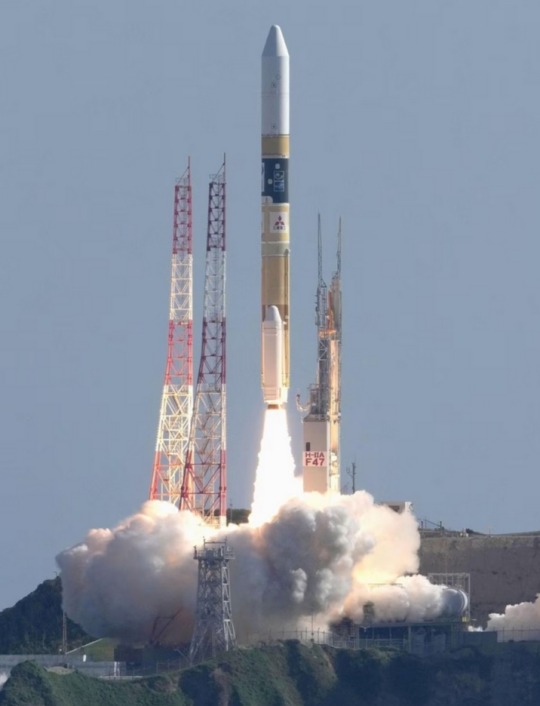
SLIM is set to touch down on the near side of the moon close to Mare Nectaris, a lunar sea that, viewed from Earth, appears as a dark spot.
Its primary goal is to test advanced optical and image processing technology.
After landing, the craft aims to analyse the composition of olivine rocks near the sites in search of clues about the origin of the moon. No lunar rover is loaded on SLIM.
Thursday's H-IIA rocket also carried the X-Ray Imaging and Spectroscopy Mission (XRISM) satellite, a joint project of JAXA, NASA and the European Space Agency.
The satellite aims to observe plasma winds flowing through the universe that scientists see as key to helping understand the evolution of stars and galaxies.

Mitsubishi Heavy Industries (7011.T) manufactured the rocket and operated the launch, which marked the 47th H-IIA rocket Japan has launched since 2001, bringing the vehicle's success rate close to 98%.
JAXA had suspended the launch of H-IIA carrying SLIM for several months while it investigated the failure of its new medium-lift H3 rocket during its debut in March.
Japan's space missions have faced other recent setbacks, with the launch failure of the Epsilon small rocket in October 2022, followed by an engine explosion during a test in July.
The country aims to send an astronaut to the moon's surface in the latter half of the 2020s as part of NASA's Artemis programme.
https://www.reuters.com/technology/space/japan-launches-rocket-carrying-moon-lander-slim-after-three-delays-2023-09-06/
youtube
Japan launches 'Moon Sniper' mission | AFP
7 September 2023
Japan's "Moon Sniper" mission blasted off Thursday as the country's space programme looks to bounce back from a string of recent mishaps, weeks after India's historic lunar triumph.
#H-IIA rocket#Japan#lunar exploration spacecraft#SLIM#moon sniper#Japan Aerospace Exploration Agency (JAXA)#Tanegashima Space Center#Smart Lander for Investigating Moon#Hiroshi Yamakawa#Hakuto-R Mission 1 lander#ispace#Mare Nectaris#X-Ray Imaging and Spectroscopy Mission (XRISM) satellite#JAXA#NASA#European Space Agency#Mitsubishi Heavy Industries#Artemis#space#space rocket#Youtube#Chandrayaan-3 mission#Luna-25 lander#India#Russia#moon#moon landing
22 notes
·
View notes
Video

Artemis I mission
NASA’s Artemis has opened a new chapter in lunar exploration.
The historic Artemis I mission took flight in the early hours of Wednesday morning after months of anticipation. The milestone event kicked off a journey that will send an uncrewed spacecraft around the moon, paving the way for NASA to return astronauts to the lunar surface for the first time in half a century.
The towering, 322-foot-tall (98-meter-tall) Space Launch System, or SLS, rocket lit its engines at 1:47 a.m. ET. It emitted up to 9 million pounds (4.1 million kilograms) of thrust to haul itself off the launchpad in Florida and into the air, streaking vibrantly across the night sky.
Atop the rocket was the Orion spacecraft, a gumdrop-shaped capsule that broke away from the rocket after reaching space. Orion is designed to carry humans, but its passengers for this test mission are of the inanimate variety, including some mannequins collecting vital data to help future live crews.
#Artemis Program#Artemis I mission#moon mission#space launch system#rocket#rocket launch#kennedy space center#nasa#nasa picture of the day#nasa video#space#solar system#moon
54 notes
·
View notes
Text
Meet the Four Artemis Astronauts Who Will Fly Around the Moon
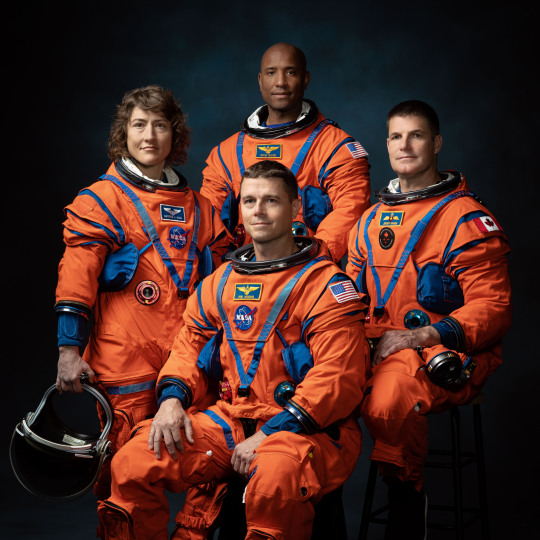
Today, we revealed the four astronauts who will fly around the Moon during the Artemis II mission, scheduled to launch in 2024. Get to know them:
Christina Koch

Meet the first member of our Artemis II crew: mission specialist Christina Koch. Koch visited the International Space Station in 2019, where she participated in the first all-woman spacewalk with Jessica Meir. She began her NASA career as an electrical engineer at Goddard Space Flight Center.
Jeremy Hansen
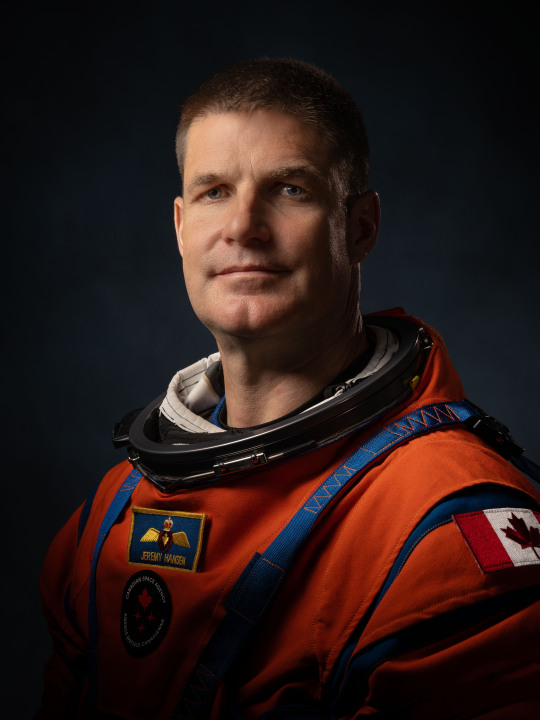
Representing the Canadian Space Agency is Jeremy Hansen from London, Ontario. Col. Hansen was a fighter pilot with Canadian Armed Forces before joining the Canadian Space Agency, and currently works with NASA on astronaut training and mission operations. This will be Col. Hansen’s first mission in space.
Victor Glover

Victor Glover is our Artemis II pilot. Glover is part of our 2013 class of NASA astronauts and was the pilot for NASA’s SpaceX Crew-1 mission. He’s logged 3,000 flight hours in more than 40 different aircraft.
Reid Wiseman

...and rounding out our Artemis II crew: mission commander Reid Wiseman. Wiseman lived and worked aboard the International Space Station as a flight engineer in 2014. He also commanded the undersea research mission NEEMO21, and most recently served as Chief of the NASA astronauts.
Make sure to follow us on Tumblr for your regular dose of space!
#Artemis#NASA#Astronauts#Lunar Mission#Space#Mega Moon Rocket#Orion#Space Station#Moon#Universe#Tech#Technology#Spaceblr#BlackExcellence365
7K notes
·
View notes
Text

The First Launch of Vulcan l John Kraus
#ULA#vulcan#rocket launch#astrophotography#astronomy#nasa#artemis mission 2#galaxy#solar system#moon#planets#stars#night#sky#space#universe
443 notes
·
View notes
